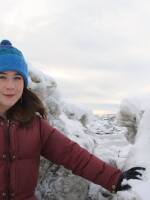State’s largest herring fishery will allow for 24,000 tons of harvest next spring.
The state has released its forecast for the 2018 Togiak herring fishery. The total forecasted biomass of 136,756 tons of Pacific herring will allow a combined purse seine and gill net harvest of 24,042 tons for the Togiak District Sac Roe Fishery. That biomass is up slightly from 2017’s forecast—130,852 tons.
“Pretty much as I expected,” Bristol Bay area research biologist Greg Buck said about the 2018 forecast. “Maybe a little small and a little older than I would have predicted, but totally in the ballpark. So I expect a fairly normal run.”
Area management biologist, Tim Sands, said last season saw more interest from the purse seine fleet than the gillnet fleet.
“We were able to take most of the seine quota last year—basically all of the seine quota last year but not much of the gillnet quota because there wasn’t a lot interest from the gillnet fleet. And I don’t know how things are going to shake out this year as far as how much gillnet interest there will be, but I think we’ll probably be able to take most of the seine quota again,” said Sands.
The forecast is calculated with an age structure model that model relies on two sets of data: total biomass of the run and the age composition estimate of the harvest. The Alaska Department of Fish and Game collects that information during the season by flying aerial surveys and sampling the harvest. The budget for managing the Togiak herring fishery was cut in 2016, so biologists could not gather this data. That meant the 2017 forecast was based on historical averages going back to the 1978.
However, private industry contributions are allowing the research necessary for biologists to forecast the Togiak herring run to continue.
“We are fully back and funded. We’re being funded under a co-op agreement that was organized with a number of different entities including BBRSDA and BBSRI” said Buck, referring to the Bristol Bay Regional Seafood Development Association and the Bristol Bay Science and Research Institute.
Weather conditions kept the department from flying aerial surveys during the peak of last season, so the biomass for 2018 is based on an average of previous aerial surveys and 2017 biological data.
Contact the author at avery@kdlg.org or 907-842-5281.



